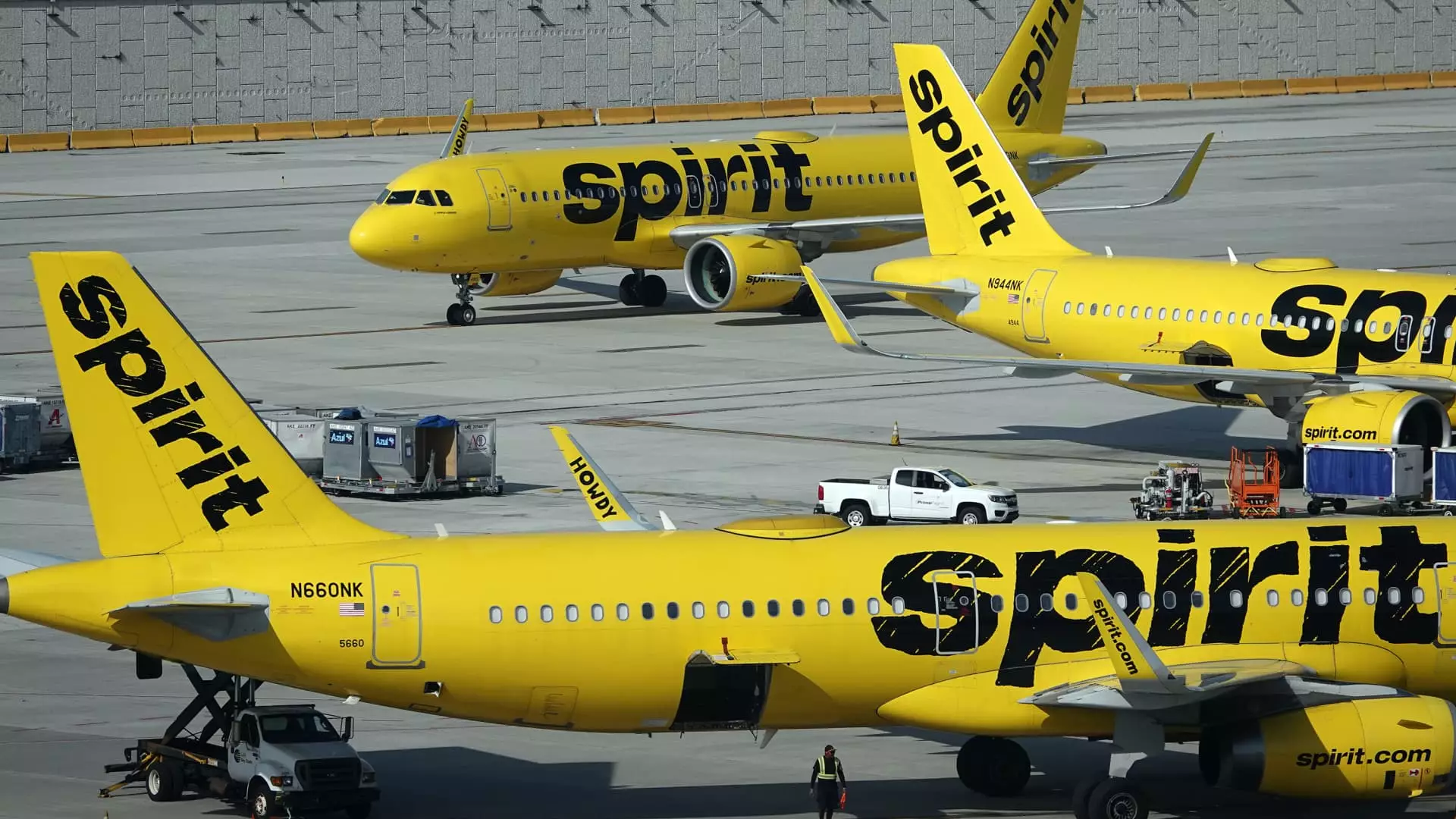Spirit Airlines has been facing significant challenges in the aviation industry, particularly following the disruptions caused by the COVID-19 pandemic. Recently, the airline announced a series of strategic measures aimed at financial recovery, which notably included job cuts and the divestiture of their aging fleet. This approach seems to have garnered immediate investor interest as shares surged over 20%, suggesting a temporary confidence in the budget carrier’s direction.
In a bid to alleviate financial strain, Spirit Airlines plans to sell 23 older Airbus aircraft, projected to generate approximately $519 million. This move is part of a larger strategy to reduce operational costs by around $80 million, primarily achieved through workforce reductions. Although Spirit has not yet disclosed the specifics regarding the number of job cuts, the airline is evidently taking steps to reshape its operational structure to align with the current market landscape. Some reports indicated that around 200 pilots were already furloughed in September, hinting at the urgent need for the company to streamline its workforce in response to dwindling passenger demand.
Compounding these challenges is Spirit’s ongoing struggle to restructure over $1 billion in debt. The airline has delayed a refinancing deadline until late December, which provides a temporary reprieve and gives the management additional time to formulate a viable plan. Nevertheless, this delay highlights the company’s precarious financial situation, raising concerns over its long-term sustainability. This ongoing uncertainty has had a profound impact on the company’s stock; despite the recent surge, Spirit’s shares have plummeted more than 80% this year, escalating fears among investors.
In a turn of events, discussions regarding a potential merger between Spirit Airlines and Frontier Airlines have surfaced, potentially revitalizing hope for a more stable future for the struggling budget carrier. This dialogue closely follows Spirit’s intentions to move forward after a planned merger with JetBlue was blocked by legal challenges. The rekindling of talks with Frontier suggests that Spirit is exploring various avenues to enhance its market position and operational viability in a fiercely competitive environment.
Despite the troubling forecast of a negative operating margin of 24.5% for the third quarter, which is an improvement over previous estimations, Spirit Airlines’ path remains fraught with arduous challenges. The ongoing adjustments in capacity signal a strategic recalibration in light of shifting consumer behaviors and persistent operational setbacks. Spirit must now prioritize efficiency and innovation while navigating market recalibrations post-pandemic.
While Spirit Airlines is currently implementing vital financial strategies, the future landscape remains uncertain. The combination of workforce management, debt restructuring, and potential mergers will play a crucial role in determining whether the airline can reclaim its footing in the evolving travel industry. As situations develop, stakeholders will be watching closely to see if these changes can translate into long-term stability and renewed growth.


Leave a Reply